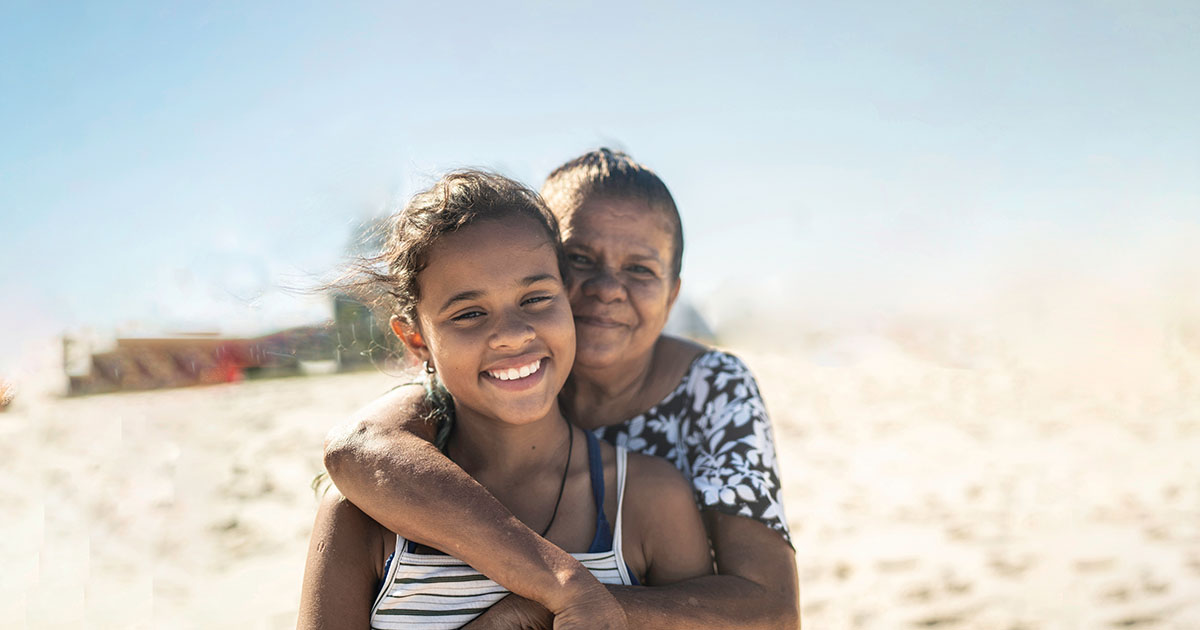Why we need to close the gap
- Details
One of the first visits I made to services outside Sydney after joining Mission Australia in 2010 was to Wilcannia in NSW. Wilcannia used to be something of a resort, it was the furthest point up the Darling River that the paddle steamers from Adelaide could travel and its fine sandstone buildings are testament to that history.
However, that is only one version of Wilcannia’s history.
Long before the paddle steamers went up the river and long before British settlers proclaimed the township of Wilcannia in 1866, the area was the site of the fish traps of the Barkindji people. It was, is and always will be, Barkindji land.
During my trip, I also learned a shocking and confronting statistic: the life expectancy for Barkindji men was only 37 years.
Today is National Close the Gap Day, a day which focuses on advocating for health equality between Aboriginal and Torres Strait Islander and non-Indigenous Australians. Recently we marked 10 years since the Government launched its strategy for closing the gap which addresses key areas including; health, education, early childhood, employment and strengthening communities.
You might be aware that many of the targets set down haven’t been achieved and a recent report by the Australian Human Rights Commission shows that we won’t succeed in meeting the targets if we continue on the same path.
Furthermore, yesterday the Australian Bureau of Statistics released the 2016 census data relating to homelessness. Figures show that Aboriginal and Torres Strait Islander people made up 3% of the Australian population on census night, but accounted for 20% of all people experiencing homelessness.
Aboriginal and Torres Strait Islander people continue to be over-represented among specialist homelessness service clients. In 2016-17, Aboriginal and/or Torres Strait Islander people were 9.2 times more likely to use specialist homelessness services than non-Indigenous people, up from 8.2 times in 2012–13.
Like many of you I’m sure, I feel angry and sad when I hear these statistics. We need to do better. How is it a fair country when the life expectancy for Aboriginal and Torres Strait Islander people is ten years less on average than other Australians?
We know safe and secure housing provide the foundation for education, health, employment and wellbeing and while housing itself is not incorporated in the closing the gap targets, it is foundational to achieving many of them.
At Mission Australia we work alongside Aboriginal and Torres Strait Islander people on a daily basis as we look to fulfil our goal of reducing homelessness and strengthening communities.
We advocate to state, territory and Federal governments together with, and on behalf of Aboriginal and Torres Strait Islander people, encouraging our leaders to implement policies and evidence-based, culturally sensitive practices that we know will help close the gap.
Mission Australia’s Homelessness Policy calls for the Government to further invest in additional new Aboriginal owned and controlled homes in remote communities and regional areas.
Overcrowding remains a significant issue - of those Aboriginal and Torres Strait Islander people who were classified as experiencing homelessness in the census, more than two-thirds were in severely overcrowded dwellings.
The Government’s National Partnership Agreement on Remote Housing, has begun to address the severe shortage of housing in remote areas, with some reduction in overcrowding in the Northern Territory. However, this agreement finishes on 30 June 2018. It’s vital that there are sustainable funding measures to ensure overcrowding and the unacceptable over-representation of Aboriginal and Torres Strait Islander people in the homelessness statistics is addressed over the long term.
Homeless services that work with Aboriginal people need to be culturally appropriate, tailored to local needs and be developed and managed in cooperation with local Aboriginal organisations. These services should also be staffed by Aboriginal people and other staff with high levels of cultural competence.
Above all, we’re committed to creating genuine partnerships with Aboriginal and Torres Strait Islander organisations, supporting them to develop, implement and lead the delivery of services in their communities.
Mission Australia is also working with other peak organisations to contribute to the Close the Gap Refresh process and we’re committed to making changes within our organisation, through our Reconciliation Action Plan.
I understand there is no one size fits all approach to meeting the needs of all communities we work in. Although there’s a long way to go before we close the gap; I remain positive about the future as I know that good work is being done across the country to contribute to reconciliation.

James Toomey
CEO Mission Australia
@jbc_toomey
Related media releases
Read about what we’ve been working on, our stance on important social issues and how you make a difference to vulnerable Australians' lives.



